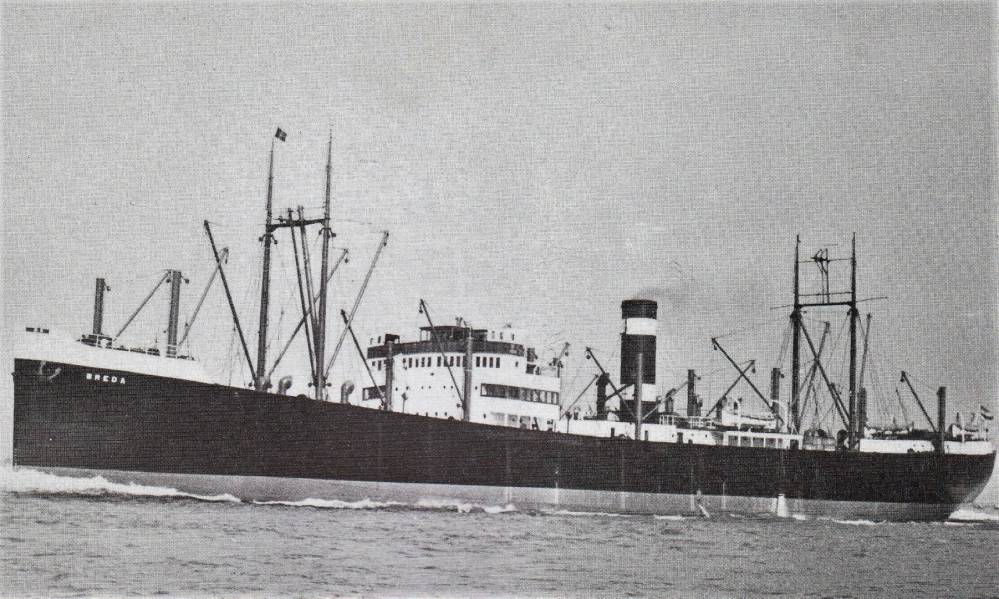The Sinking of the S S Breda
SS Breda courtesy of Neil Owen
The Sinking of the S S Breda
As darkness began to fall on the late afternoon of 23 December 1940, three Heinkel III bomber aircraft of Kriegsgeschwader 26, based at Stavanger in Norway, arrived over the Firth of Lorn and dived to attack the ships of a convoy lying at anchor off Lismore. The aircraft dropped parachute flares to illuminate their target and began to machine gun vessels below. Their leader, Oberst Leutnant Robert Fuchs, concentrated the bombing attack on one specific ship, the S S Breda, which was under steam and preparing to leave to join a further convoy. This Dutch-registered vessel had left South America at the beginning of the war and arrived at Southampton, minus several crew members who had professed pro-Nazi views and been summarily “removed” en route. The Breda was now loaded with a full contingent of biplane aircraft and vehicles for a new air training school to be established in Kenya for the war against the Italians in Abyssinia. The Italian army was being routed by the British at this stage, and the Germans were keen to bolster their ally. The Aga Khan III had purchased or bribed passage on the S S Breda for his bloodstock racehorses and pack of hounds to Mombasa, Kenya.
A near miss by a bomb caused the hull plates to buckle, and the Breda began to flood below decks above the capacity of the ship’s pumps. Her Captain, Johannis Fooy, beached the ship on a sandbank in Ardmucknish Bay. The crew released the horses on deck and took to the boats before finding that they were obliged to fend off the panicking animals in the freezing seas. The hounds were also freed and started to swim for their lives. One horse remained trapped in a horsebox which floated away off the main deck. A local girl, Mary MacNiven, saw this from the shore and took to the water, fearlessly striking out to the stricken animal in the freezing waters and releasing it. Another horse was shot by Lieutenant Lachlan Macleod of the Home Guard, who mistook the clatter of sliding hooves on the pebbled beach in the darkness as the sound of downed airmen coming ashore. A macaque monkey, owned by the captain`s wife, jumped from the ship as it sank and eventually made it to dry land, becoming a local “resident” for the next 15 years. It is buried in the garden at Letterwalton. The S S Breda slowly settled on the sandbank, and the following day, only the cargo-derricks were visible above the waves.
This contribution was made by Neil Owen. Neil is a local historian and heritage enthusiast
More information on visiting the area can be found here.
